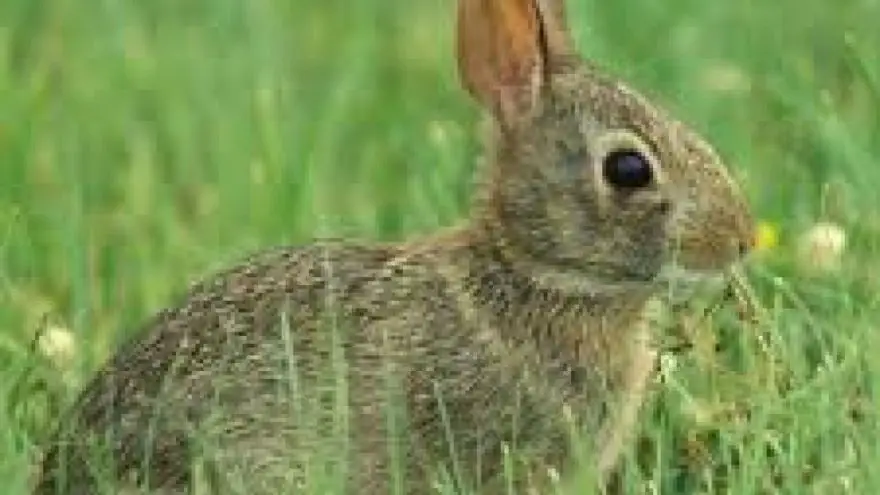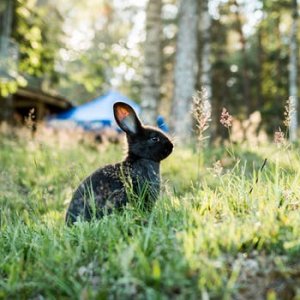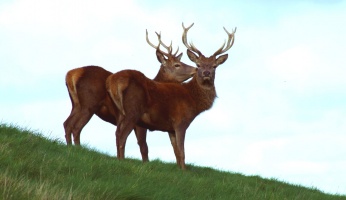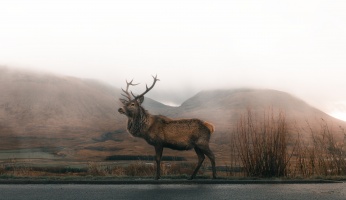Hunting Rabbits: A Complete Guide
 Hunting Rabbits: A Complete Guide
thegearhunt.com
Hunting Rabbits: A Complete Guide
thegearhunt.com
There is a new age dawning when it comes to hunting rabbits.
Hunters have been after the Eastern Cottontail rabbit since the days of the Native Americans. While the number of hunters has declined, the activity remains one that is incredibly popular and even now is one of the small game types of hunting that is most popular. That being said, the dynamics of this sport have dramatically changed, and to achieve any sort of success that is consistent, hunters need to adapt to this new age.
Bunny Facts
 Throughout the years, the number of people who hunt for rabbits has declined. According to a recent survey, there are about one and a half million people in the US who still hunt for hares and/or rabbits. This type of hunting is ranked as the 4th type in popularity and is tied for that place with hunting for pheasant. The only things that outrank it are squirrel, turkey, and whitetail deer hunting. Hunting for rabbits ranked even higher than hunting for water fowl and doves as well as a few other species, such as bear, elk, and more.
Throughout the years, the number of people who hunt for rabbits has declined. According to a recent survey, there are about one and a half million people in the US who still hunt for hares and/or rabbits. This type of hunting is ranked as the 4th type in popularity and is tied for that place with hunting for pheasant. The only things that outrank it are squirrel, turkey, and whitetail deer hunting. Hunting for rabbits ranked even higher than hunting for water fowl and doves as well as a few other species, such as bear, elk, and more.
Even as close as a decade ago, locating rabbits wasn’t that difficult. They are known to be prolific breeders and even though their population might decline in years where there is a lot of bad weather, those same population numbers always seem to bounce back once the weather improves. Back then, there was plenty of the habitat they enjoy. That habitat shrinks now on a yearly basis. There is also a bit more predation. The result of this is that rabbit populations aren’t even close to what they were in years past. Nowadays, it isn’t very often that someone can head out to the back 40 and simply kick the brush around to flush out a number of the furry critters.
Their habitat that is shrinking not only reduced the amount of rabbits, it also reduced the access that hunters have to them while allowing predators opportunities that make it easy to catch one for their dinner. The proliferation of coyotes throughout rabbit country, as well as the number of feral domestic cats is now at a level heretofore unseen, and this has only served to increase rabbit predation. All of these predation and habitat factors have led to alterations in rabbit behavior and location.
Where They Hide
People can still find rabbits anywhere the rabbits can find sources of food and cover. In many locations, sparse cover will not hold the rabbits like it did in yesteryears. Hunters now need to concentrate on those areas that have more abundant and denser cover if they want to locate a good supply of rabbits.
There is always an exception to the rule though. In this case, it is near oil rigs, barns, dwellings, and other areas that have human activity that is consistent. Many predators, including coyotes, will stay away from those areas that are inhabited by people, but rabbits will just hang out in thick foliage or brush and not pay any attention at all to the activities of people. In the previous decade, they seem to have increased their attraction to this type of area and can now be found in more urban areas than they used to be. That being said, the prime locations for hunting rabbits remain places with sufficient cover, human activity, and a dearth of predators are the best choices.
 As previously mentioned, rabbits that are located in areas that are more remote can mostly be found where there is the thickest cover. They have always preferred cover that was thicker. The difference now is that they can be found less in some of the other areas they used to haunt in the past. It used to be a common thing to be able to walk into a field and see rabbits poking their heads up all over the place. Now, not so much.
As previously mentioned, rabbits that are located in areas that are more remote can mostly be found where there is the thickest cover. They have always preferred cover that was thicker. The difference now is that they can be found less in some of the other areas they used to haunt in the past. It used to be a common thing to be able to walk into a field and see rabbits poking their heads up all over the place. Now, not so much.
Hunters have to hit the areas with sparse cover early on in the season if they want any success there. This is even more true when it comes to agricultural areas, because the rabbits are forced away from fields with row crops during the harvest will take cover right at their edges. That said, within only a little bit of time, they will either move to areas with safer, thicker cover, or they will be eaten by predators.
The best places to hunt for rabbits are those areas that are full of cover that is especially dense. Things like gnarly tangles of brush, honeysuckle, thorns, and briars make it difficult for foxes and coyotes to reach them and they also serve as great protection when it comes to birds of prey. Additionally, they are difficult for hunters to kick up. Rabbits tend to stick with locations such as these and often, they won’t jump until they are forced out by rabbit dogs or they are nearly stepped on.
Watch Them Run
A common phrase that hunters shout is ‘There he goes!’ They will yell this out when rabbits bolt from their cover and streak off down the edge of a field or across open areas as they try to reach the next area of thick cover. Hunters will then need to figure out which direction the rabbit will go and move into position so that they can intercept it and get an opportunity to shoot when the animal circles back near the location where they first appeared. That is one part of hunting rabbits that hasn’t changed. One thing that has changed is how the animals will run and circle.
 Cottontail rabbits tend to have home ranges that are relatively small and are quite familiar with all of their local surroundings. They are not keen to leave this zone of comfort. For that reason, they will often dart out and try to get as much distance as possible between them and hunting dogs. When they have done that, they will stop and wait. When the dogs that are tracking their scent draw near, the furry critter will take off again. Eventually, it will wend its way back to the original spot it jumped from.
Cottontail rabbits tend to have home ranges that are relatively small and are quite familiar with all of their local surroundings. They are not keen to leave this zone of comfort. For that reason, they will often dart out and try to get as much distance as possible between them and hunting dogs. When they have done that, they will stop and wait. When the dogs that are tracking their scent draw near, the furry critter will take off again. Eventually, it will wend its way back to the original spot it jumped from.
Most of the time, this act of jumping and circling doesn’t cover too much of a distance. That will depend on the cover and the habitat though. Typically, a circle will keep to within about 100 yards. That being said, in areas where the cottontails are constantly under pressure from predators – including areas that are along tight strips of cover that are between two fields, they tend to run quite a bit farther before they will turn and begin to circle. This means that we need to be able to work just a bit harder in order to get into position to take a shot.
Kick Them Up
In contrast to most rabbits finding and staying tight under even the thickest cover, there will still be the possibility to find easier rabbits. Even with all of the alterations in rabbit behavior, predation, and habitat, you might still be able to find a rabbit or two without having hunting dogs. Even so, hunters need to scout out hunting areas wisely and be willing to go the extra mile in order to have the ability to enjoy a hot bowl of rabbit stew.
Some of the best areas to kick up a few rabbits are those places we mentioned above – that are near human activity. Look around spots near ponds that have grown up, automotive junkyards, farm implements that have been stored, barns, and other such areas where there are humans nearby. The ideal locations for this will be those that are not near woods. Search for areas that predators such as bobcats, foxes, and coyotes would need to cross open areas to get to.
A Full Bag of Rabbits
Hunting rabbits can be really fun, and they happen to be one of the tastiest wild game that you can put on your table. They might not be easy to find though. Getting permission to hunt and then finding the rabbits isn’t as easy as it used to be. However, with a little bit of exertion, a couple of friends, and a pair of good rabbit hunting dogs, it can be an activity that is as rewarding and fun as ever. Time that you spend in the field, coupled with a gourmet wild game dining experience combine to make the extra work that much more meaningful.
Most people who hunt rabbits will bag a few swamp rabbits or cottontails each time they go out hunting for them. There are a few techniques though that can up your chances of success.
Leapfrogging
 As urban development and farming operations encroach on the most prime lands for hunting rabbit, those continuous, large blocks of territory for hunting them are more and more difficult to locate. Because of this, many hunters are abandoning the practice of hunting for a full day in a single area of brushy land. Nowadays, many of them are moving to leapfrogging. This is where they will cover an overgrown fencerow or patch of brush in about an hour. They will then go on to another area where they are likely to find a rabbit or two. By doing this, the chances are excellent that you will be able to find more rabbits.
As urban development and farming operations encroach on the most prime lands for hunting rabbit, those continuous, large blocks of territory for hunting them are more and more difficult to locate. Because of this, many hunters are abandoning the practice of hunting for a full day in a single area of brushy land. Nowadays, many of them are moving to leapfrogging. This is where they will cover an overgrown fencerow or patch of brush in about an hour. They will then go on to another area where they are likely to find a rabbit or two. By doing this, the chances are excellent that you will be able to find more rabbits.
Farmers Know Best
Rabbit hunters who are savvy will know that farmers can be invaluable sources of information when it comes to finding concentrations of cottontails. They work on their land on a daily basis and see the rabbits regularly. Because of this, they will typically know right where to look for huntable populations. Most of them are also eager to thin that population out so that they don’t damage their crops.
It can be a simple thing to make your contacts out in farm country.
Keep in Mind:
You need to remember to ask for permission to hunt each time you visit.
If the owner of the land asks you to abide by his set of rules, abide by them. You never know when he might be nurturing a bevy of quail.
Always leave things just as they were when you found them. Also, always take the time to personally thank the farmer.
Offer to share anything you bag and then follow up with a note saying thank you and a small token of your appreciation.
If you make this set of guidelines a habit with each of your farm visits, you will always have prime land to hunt for rabbits on.
Scouting at Sunrise and Sunset
 Driving down rural roads at dusk and dawn can be another good way to locate potential sites that will be good for hunting. Cottontails tend to be more active late in the day or in the early morning. Especially when they are on the edges of roadside cover and fields, where thickets and briars provide sanctuary near areas where they like to feed.
Driving down rural roads at dusk and dawn can be another good way to locate potential sites that will be good for hunting. Cottontails tend to be more active late in the day or in the early morning. Especially when they are on the edges of roadside cover and fields, where thickets and briars provide sanctuary near areas where they like to feed.
Drive around at a slow speed and pay attention to any spots where you catch sight of the elusive rabbits. Once you have found a few spots, you can inquire at homes nearby as to who owns the land where you spotted them so that you will be able to ask for permission to hunt there.
Wear Clothing that will Protect You
Most of the places where cottontails like to hide have one main thing that they all share – thorns. It doesn’t matter if you are hunting with dogs, kicking the rabbits up yourself, or just retrieving game that has been downed, you can count on some sort of sticker digging at your thighs, fingers, ears, and other tender areas of your body. Wearing clothing that can protect you will work wonders when it comes to turning your trips hunting into ones that are less painful.
Many rabbit hunters prefer blue jeans, but these don’t really offer a lot of protection. A good pair of britches that are briar busting will have a covering of thornproof material that covers the front. These should be viewed as a vital piece of your equipment, regardless of how or where you hunt. It can also be helpful to wear a coat that is resistant to briars along with a hunting cap with flaps to cover your ears and a good pair of thick gloves.
After all, is said and done, rabbit hunting should be both exciting and fun. It can be full of disappointment as well as triumphs. In short, rabbit hunting can give you a barrage of wonderful experiences and sensations. The heritage of hunting is one that is a treasure beyond compare.
Sources
- YouTube, How to Hunt Rabbits: Rabbit Hunting Instructions and Demo
- Hunting Rabbits, Rabbit Hunting 101
- How to Hunt Rabbit, Hunting Rabbit: Tips and Methods for Controlling, Hunting, and Cooking Rabbit
- Captain Hunter, How to Hunt rabbits Without a Hunting Dog















